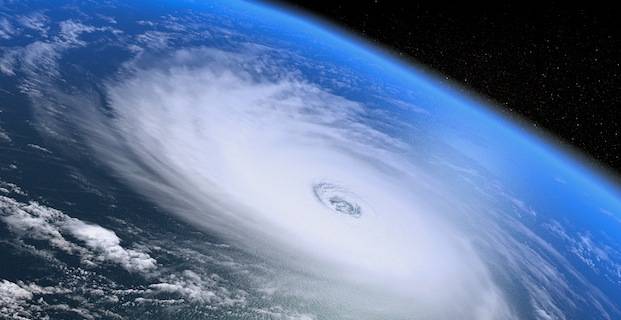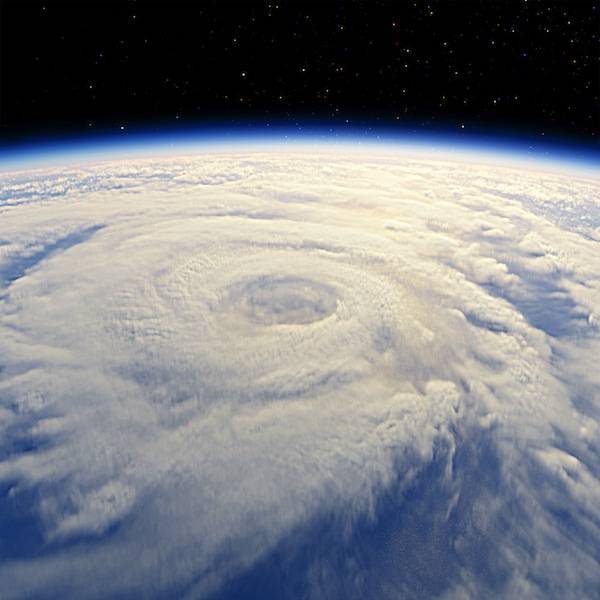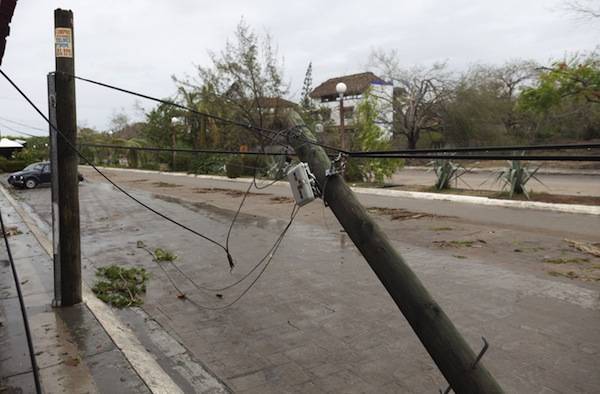Hurricane
What is a Hurricane?
Hurricanes can be described as giant, swirling storms. They are
severe ‘tropical storms’ and are usually accompanied by treacherous
thunderstorms. These monster storms can reach winds speeds up to 160
miles per hour. They can also unleash a whopping 2.4 trillion gallons of
rain a day.
Hurricanes occur in the Caribbean Sea, Eastern Pacific Ocean, Southern Atlantic Ocean and in the Gulf of Mexico.
Types of Winds
These same ‘tropical storms’ are known as ‘cyclones’ in the northern
Indian Ocean and Bay of Bengal, and similar storms are known as
‘typhoons’ in the western Pacific Ocean. These storms may have different
names, but they all have similar and devastating effects.
● Tropical depression
A tropical depression is an occurrence which consists of clouds and
thunderstorms joining together. A tropical depression can have wind
speeds up to 39 mph. This is the maximum wind speed that is expected
from a tropical depression. It has no eye and does not typically have
the organization or the spiral shape of more powerful storms. It’s
pressure is lower than more serious storms, and this is why it is given
the name “depression”.
● Tropical storm
A tropical storm is a group of heavy thunderstorms with a specific
surface circulation and greatest constant winds between 39 – 74 mph.
During this point, the typical cyclonic shape starts to develop, though
an eye is not always present. The Government weather services assign
names to the cyclone that reaches this intensity and strength.
● Hurricane or typhoon
A hurricane or typhoon system involved sustained winds that reach at
least 34 meters per second or 74 miles per hour. A hurricane can be
sometimes referred to as a tropical cyclone, as opposed to a depression
or storm. The eye of the storm is actually the calmest part of the
storm, and is at this point the pressure is at its lowest. The eye can
be observed from satellite images. These images look like small,
circular shaped spots that have no clouds. The area that is called the
eye wall surrounds the eye of the storm. The size of the area is between
16 -80 kilometers wide. In the eye wall the winds and thunderstorms are
the strongest and cause the greatest amount of damage. The strongest
winds sustained in recorded tropical cyclones have been measured at 195
miles an hour or 85 meters a second.
Where and when hurricanes occur
Areas that are subjected to, and regularly experience hurricanes are
all the Atlantic and Gulf of Mexico coastal areas. Parts of the
Southwest United States and Pacific Coast also experience heavy rains,
storms and floods each year as results of hurricanes that hit Mexico.
The Atlantic hurricane season starts in the month of June and ends in
November. Mid August to early October is considered as the peak seasons
for hurricanes. The Eastern Pacific hurricane starts and ends around
May 15 – November 30.
Hurricanes start off in the warm ocean waters as tropical
disturbances. The temperature of these waters would be around 80 degrees
Fahrenheit. The pressure from these systems produces energy from the
warm water. A storm is termed a ‘tropical depression’ as it achieves
wind speeds of 38 miles per hour. (61 kilometers per hour).
A tropical depression becomes a tropical storm when its wind speeds
reach up to 39 miles an hour. When a storm’s unrelenting wind speeds
reach at 74 miles an hour it forms a hurricane and earns a category
rating of 1 to 5 on the Saffir-Simpson scale.
The scale is used to measure the strength and intensity of a
hurricane. It ranges from one-five rating. The scale is used to give an
accurate estimation of the flooding and property damages expected down
the coast from the storm. Wind speed is the determining factor in the
scale.
Hurricanes can be described as giant heat engines that produce large
scale energy. They draw heat from warm ocean air and release it through
condensation of water vapor during thunderstorms.
The low pressure centre which the hurricane spins around is known as
the ‘eye’, or the ‘eye of the storm’. Sinking air makes this 20 to
30-mile-wide area notoriously calm.
The dangers of hurricanes
The major fear we have on hurricanes is its capability to cause
catastrophic damages to not just the coastlines but to several miles
inland. Today’s stats show that hurricanes are capable of producing
winds exceeding 155 mph (miles per hour).These high winds are so
powerful and destructive that they can pull entire buildings, boats and
farms out of the ground and relocate them to several miles away from
where they were originally found.
Apart from it, hurricanes are also able to create and form heavy
storm around the coastal areas that can cause heavy damage due to heavy
rainfall. The most destructive results of hurricanes are the floods and
flying debris from the extreme winds. It’s the slow moving hurricanes
that produce heavy rains especially moving to mountainous regions which
results in mudslides and landslides. Nonstop heavy rainfall can also
causes flash flooding.
Strong tropical cyclones at sea can cause high winds, heavy rain and
large waves that causes shipwrecks and disrupt shipping. Tropical
cyclones swirl up water causing cool winds behind.
On land, the heavy winds can cause catastrophic disasters and most of
the time even destroys vehicles, bridges, buildings, barns and other
outdoor structures. The winds can turn debris into deadly objects in a
matter of seconds.
The storm surge in sea levels increases to causes problems due to the
tropical cyclone, which are typically the worst effect from land
falling. It has been recorded that these effects result in 90% of
tropical cyclone deaths. The wide rotation of the land falling tropical
cyclones and wind forms tornadoes. Tornadoes can also be produced as a
result of eye wall vortex, which can persist until landfall.
Over the past two hundred years, these tropical cyclones have been
held responsible for causing the deaths of around 1.9 million people
worldwide. Large undrained areas had large amounts of water caused by
flooding. This results to form infection in many people and contributed
to mosquito-borne illnesses. Crowded evacuation shelters increase the
risk of disease spreading. Tropical cyclones can had negative effects
infrastructure and sometimes they cannot be fixed quickly. This can lead
to power cuts, bridge destruction, and can make reconstruction efforts
very difficult.
Although cyclones take an enormous toll on human lives and public and
personal property, they may have very important effects on the water
regimes of locations that they occur in. This is because they transport
the very necessary water to drier regions. Tropical cyclones can also
play a part in global warming. They help maintain the global heat
balance by the warm and damp air being moved to the middle latitudes and
Polar Regions. The cyclones also help keep the heat balance maintained
by regulating the thermohaline circulation. The hurricanes strong winds
and storm surge are usually destructive to human-made structures, but
they also affect the water in important fish breeding areas. In fact, it
is popular that due to the destruction that the tropical cyclones
cause, the local property values increase and will result in
development.
Global warming effects on hurricanes
A U.S. Geographical Laboratory has run tests to determine the effects
of global warming on hurricanes. Their studies and research conclude
that there are high possibilities of extreme and intense hurricanes to
occur in the next century since the climate is warmed due to the
increase in greenhouse gases in our atmosphere.



No comments:
Post a Comment